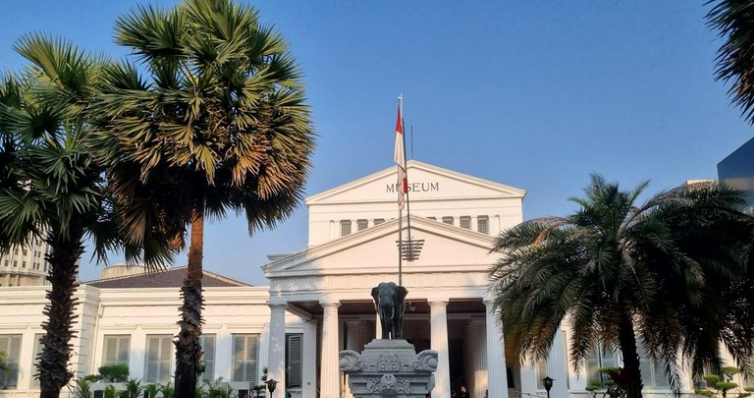
The National Museum, the second largest and oldest museum in Indonesia, burned down. The incident was seen as an indicator that something was wrong with museum management.
The fire occurred on Saturday (16/9/2023) evening. Building A of the museum contains four rooms, namely for storage and a waiting room. Central Jakarta Metro Police Chief Kombes Komarudin said the room in Building A that caught fire was precisely a prehistoric room.
History activist Asep Kambali's fire at the National Museum reflects a big problem with museums in Indonesia in general. Asep, who became head of the museum and assessor of museum standardization in Indonesia in 2017, said that the most vulnerable condition in museums is the issue of security.
Jakarta - The National Museum, the second largest and oldest museum in Indonesia, caught fire. The incident was seen as an indicator that something was wrong with museum management.
The fire occurred on Saturday (16/9/2023) evening. Building A of the museum contains four rooms, namely for storage and a waiting room. Central Jakarta Metro Police Chief Kombes Komarudin said the room in Building A that caught fire was precisely a prehistoric room.
History activist Asep Kambali's fire at the National Museum reflects a big problem with museums in Indonesia in general. Asep, who became head of the museum and assessor of museum standardization in Indonesia in 2017, said that the most vulnerable condition in museums is the issue of security.
ADVERTISEMENT
SCROLL TO CONTINUE WITH CONTENT
"I traveled around Indonesia, indeed the most vulnerable condition was regarding the security and safety of the museum itself," he said while at the National Museum, to detikTravel, Monday (18/9/2023).
"The first thing is that museums (in general) have security systems, security systems, this is not only dangerous for visitors, but also dangerous for employees and the collection itself," he said.
According to him, fire safety systems such as APAR (Light Fire Extinguishing Equipment) need to be available in abundance on every side of the museum. The existence of APAR is also one of the standards that must exist in museums.
"Maybe you can check later at the museum (National Museum) that there are adequate hydrants or APARs in every corner, because I'm sure when (the fire) happens it won't be too big. Maybe within a radius of a few meters if there are APARs it can be prevented," he added.
"Actually, it has to be included, in the standardization of museums it has to be included (hydrants), but the building that is currently burning is in the existing condition of the old building. So, was the channel built later after standardization," he said.
Asep said that when he was a museum standards officer at that time, the National Museum was one of the museums that was not included in the assessment list. Because, this museum has international standards.
"When I carried out a standardization assessment of museums, at that time I did not assess all museums, but this museum (National Museum) was considered to be of international caliber. So the assessment was not carried out at the national museum, but at museums under the national museum," said Asep.
Apart from that, like many other people, he also deeply regrets the fire that hit this museum. And he also demanded that there be an immediate investigation into this incident.
"According to my understanding, the fire was not a disaster. It was a disaster caused by human negligence, so this is definitely not a disaster to be mourned but rather a disaster that must be investigated to investigate who the perpetrator was and what the motive for this fire was," he said.
Yay! 🤗
Your content has been boosted with Ecency Points, by @d4photoshop.
Use Ecency daily to boost your growth on platform!
Support Ecency
Vote for new Proposal
Delegate HP and earn more